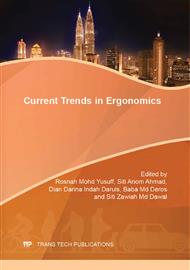[1]
I. Hussein and M.H.A. Rahman, Field study of thermal in Malaysia, European Journal of Scientific Research. 1 (2009) 134-152.
Google Scholar
[2]
Q.J. Kwong and N.M. Adam, Thermal comfort in enclosed lift lobby of tropical educational institution, Thammasat Int. J. Sci. Tech. 15 (3) (2010) 8-18.
Google Scholar
[3]
American Society of Heating, Refrigerating and Air Conditioning Engineers (ASHRAE), ASHRAE Standard 5, Thermal Environmental Conditions for Human Occupancy, (2004).
Google Scholar
[4]
G.S. Song, J.H. Lim and T.K. Ahn, Air conditioner operation behavior based on student's skin temperature in a classroom, Applied Ergonomics. 43 (2012) 211-216.
DOI: 10.1016/j.apergo.2011.05.009
Google Scholar
[5]
ASHRAE-IEC Standard 90. 1, Energy standard for buildings except low rise residential buildings, American Society of Heating, Refrigerating and Air Conditioning Engineers, Atlanta, GA, (2007).
DOI: 10.2172/5737921
Google Scholar
[6]
ISO 7730, Moderate thermal environment-Determination of PMV and PPD indices and Specifications of conditions of thermal comfort, International Organization for Standardization, Geneva, (1994).
DOI: 10.3403/00814151
Google Scholar
[7]
F. Nicol, M. Humphreys, O. Sykeys and S. Roaf, Standard for thermal comfort, E&FN Spon, London, (1995).
Google Scholar
[8]
K.C. Parson, Human thermal environments, second ed., Taylor & Francis, New York, (2003).
Google Scholar
[9]
Anon, Experiment HP (Human Physiology) skin temperature stress calming and embarrassment, Human Physiology. (2011) 1-11, http: /www. docstoc. com/docs/90520741/ Experiment-HP-Skin-Temperature-Stress-Calming-and-Embarrassment.
Google Scholar
[10]
H. Hensel, Thermoreception and temperature regulation, In: Monographs of the physiological society 38, London: Academic Press, (1981).
Google Scholar
[11]
N. Djongyang, R. Tchinda and D. Njomo, Thermal comfort: A review, Renewable and Sustainable Energy Reviews. 14 (2010) 2626-2640.
DOI: 10.1016/j.rser.2010.07.040
Google Scholar
[12]
J.L.M. Hensen, On the thermal interaction of building structure and heating and ventilation system, PhD thesis, Technische Universiteit Eindhoven, (1991).
Google Scholar
[13]
ASHRAE, Thermal comfort. ASHRAE Handbook of Fundamentals, Atlanta, USA, (1997).
Google Scholar
[14]
M. Fountain, Laboratory studies of the effect of air movement on thermal comfort, ASHRAE Transactions. 97 (1991) 863-873.
Google Scholar


